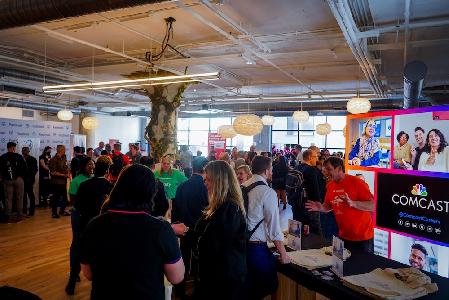Offering part of your main product for free can seem like a counterintuitive business move to most, but in tech, things are a little different.
Back in February, realLIST company Stitch made a risky bet: taking its flagship data scouring platform Singer to an open-source model. The tool lets devs extract, transform and load (ETL, as folks in the know call it) data from sources and into different targets.
Before that, the data integrations were only available as part of the company’s paid service. The main difference between using the open-source integrations and Stitch’s paid platform is that, with the former, companies are responsible for hosting and managing the software themselves, rather than Stitch putting in the work. It’s a bit of a gamble, Stitch CEO Jake Stein told Technical.ly.
We'd rather have 50 percent of a watermelon than 100 percent of a grape.
“We’re 100 percent confident that some people will use Singer and not become Stitch customers,” said the former RJMetrics cofounder, who became the head of the new company in August of last year following an acquisition/spinout combo move. “We’re OK with that, because the bet we’re making is that the availability of Singer will increase the number of people using and contributing to our integration ecosystem more than enough to make up for it.”
Hello, world – I'm Singer, a simple, composable open source ETL standard. Together, we can move mountains. Of data. https://t.co/CSRg6YENGX pic.twitter.com/BJeQLfivor
— Singer (@singer_io) March 1, 2017
At the time of the move to the open-source model, Stitch was able to tap into 55 data sources including Google AdWords, Facebook and Salesforce. Stein says the number still isn’t high at all: companies use thousands of data-yielding tools. The expansion was also happening organically: customers were asking to write new programs so they could broaden the use of Stitch’s platform. Pulled off correctly, the move to open source might mean indirect growth for Stitch’s paid service.
“Put another way, we’d rather have 50 percent of a watermelon than 100 percent of a grape,” Stein said.
But for the watermelon to keep growing, Stitch will need to build community around Singer. Since the announcement was made, 17 new data sources were built by developers, 150 of whom have come together in a public Slack. The company also poached Texas-based dev and software evangelist Ashley Hathaway, formerly with IBM’s Watson, to lead the community building efforts around Singer.
“My favorite project that she’s tackled so far is adding support for superhero data via the Marvel API,” Stein said.
.@Ash_Hathaway is tapping into Marvel API; then the Essentials on Pandas! On the 4th #PyData meetup in Austin @HomeAway Domain! pic.twitter.com/hXrqwMR4JB
— Austin★ Tech🎉Events (@ATxTE) June 28, 2017
“We have a lot planned for Singer as well including more destinations, user experience improvements and open sourcing the rest of Stitch’s integrations (we’ve done 25 percent of them so far),” Stein said of the rollout which is now five months in.
Join the conversation!
Find news, events, jobs and people who share your interests on Technical.ly's open community Slack

Philly daily roundup: Technical.ly's new editor; Meet Diversitech's founder; Flaws in planned TikTok ban

Edtech CEO looks back on the promises of summer 2020: 'It never rang true to me'

Technical.ly boosts editorial team with hire of experienced tech journalist

